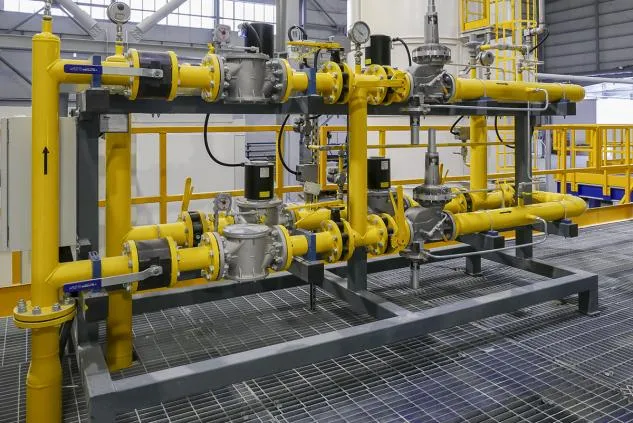- Industrial zone, South of Anping Town, Hengshui, Hebei, China.
- sales@hfpetromesh.com
- +86-18931809706
 Afrikaans
Afrikaans  Albanian
Albanian  Amharic
Amharic  Arabic
Arabic  Armenian
Armenian  Azerbaijani
Azerbaijani  Basque
Basque  Belarusian
Belarusian  Bengali
Bengali  Bosnian
Bosnian  Bulgarian
Bulgarian  Catalan
Catalan  Cebuano
Cebuano  Corsican
Corsican  Croatian
Croatian  Czech
Czech  Danish
Danish  Dutch
Dutch  English
English  Esperanto
Esperanto  Estonian
Estonian  Finnish
Finnish  French
French  Frisian
Frisian  Galician
Galician  Georgian
Georgian  German
German  Greek
Greek  Gujarati
Gujarati  Haitian Creole
Haitian Creole  hausa
hausa  hawaiian
hawaiian  Hebrew
Hebrew  Hindi
Hindi  Miao
Miao  Hungarian
Hungarian  Icelandic
Icelandic  igbo
igbo  Indonesian
Indonesian  irish
irish  Italian
Italian  Japanese
Japanese  Javanese
Javanese  Kannada
Kannada  kazakh
kazakh  Khmer
Khmer  Rwandese
Rwandese  Korean
Korean  Kurdish
Kurdish  Kyrgyz
Kyrgyz  Lao
Lao  Latin
Latin  Latvian
Latvian  Lithuanian
Lithuanian  Luxembourgish
Luxembourgish  Macedonian
Macedonian  Malgashi
Malgashi  Malay
Malay  Malayalam
Malayalam  Maltese
Maltese  Maori
Maori  Marathi
Marathi  Mongolian
Mongolian  Myanmar
Myanmar  Nepali
Nepali  Norwegian
Norwegian  Norwegian
Norwegian  Occitan
Occitan  Pashto
Pashto  Persian
Persian  Polish
Polish  Portuguese
Portuguese  Punjabi
Punjabi  Romanian
Romanian  Russian
Russian  Samoan
Samoan  Scottish Gaelic
Scottish Gaelic  Serbian
Serbian  Sesotho
Sesotho  Shona
Shona  Sindhi
Sindhi  Sinhala
Sinhala  Slovak
Slovak  Slovenian
Slovenian  Somali
Somali  Spanish
Spanish  Sundanese
Sundanese  Swahili
Swahili  Swedish
Swedish  Tagalog
Tagalog  Tajik
Tajik  Tamil
Tamil  Tatar
Tatar  Telugu
Telugu  Thai
Thai  Turkish
Turkish  Turkmen
Turkmen  Ukrainian
Ukrainian  Urdu
Urdu  Uighur
Uighur  Uzbek
Uzbek  Vietnamese
Vietnamese  Welsh
Welsh  Bantu
Bantu  Yiddish
Yiddish  Yoruba
Yoruba  Zulu
Zulu
- Afrikaans
- Albanian
- Amharic
- Arabic
- Armenian
- Azerbaijani
- Basque
- Belarusian
- Bengali
- Bosnian
- Bulgarian
- Catalan
- Cebuano
- Corsican
- Croatian
- Czech
- Danish
- Dutch
- English
- Esperanto
- Estonian
- Finnish
- French
- Frisian
- Galician
- Georgian
- German
- Greek
- Gujarati
- Haitian Creole
- hausa
- hawaiian
- Hebrew
- Hindi
- Miao
- Hungarian
- Icelandic
- igbo
- Indonesian
- irish
- Italian
- Japanese
- Javanese
- Kannada
- kazakh
- Khmer
- Rwandese
- Korean
- Kurdish
- Kyrgyz
- Lao
- Latin
- Latvian
- Lithuanian
- Luxembourgish
- Macedonian
- Malgashi
- Malay
- Malayalam
- Maltese
- Maori
- Marathi
- Mongolian
- Myanmar
- Nepali
- Norwegian
- Norwegian
- Occitan
- Pashto
- Persian
- Polish
- Portuguese
- Punjabi
- Romanian
- Russian
- Samoan
- Scottish Gaelic
- Serbian
- Sesotho
- Shona
- Sindhi
- Sinhala
- Slovak
- Slovenian
- Somali
- Spanish
- Sundanese
- Swahili
- Swedish
- Tagalog
- Tajik
- Tamil
- Tatar
- Telugu
- Thai
- Turkish
- Turkmen
- Ukrainian
- Urdu
- Uighur
- Uzbek
- Vietnamese
- Welsh
- Bantu
- Yiddish
- Yoruba
- Zulu
Exploring the Applications and Benefits of Metal Gratings in Various Industries
Exploring Metal Grating Structure, Uses, and Advantages
Metal grating is a versatile and widely utilized component in various engineering and construction applications. Composed of a framework that consists of a series of parallel bars or rods, metal grating provides a strong, durable surface ideal for walking, working, and supporting heavy loads. The design of metal grating allows for easy drainage and ventilation, making it a preferred choice in environments where exposure to liquids or heat is a concern.
One of the key materials used in the production of metal grating is steel, particularly stainless steel and carbon steel
. Stainless steel grating is favored for its resistance to corrosion and lingering pollutants, making it suitable for use in environments such as chemical plants, food processing facilities, and outdoor areas exposed to the elements. On the other hand, carbon steel grating, although less resistant to corrosion, is often treated with protective coatings to enhance durability and provide cost-effective solutions for less demanding environments.Metal grating finds application in various fields, most notably in industrial settings. It is commonly used for flooring in factories, warehouses, and power plants, as it provides a strong surface that can withstand heavy machinery and foot traffic. Additionally, it plays a critical role in drainage systems, where proper airflow and the unhindered passage of liquids are essential for efficient operational management. Its open design allows water to drain quickly, reducing pooling and minimizing slip hazards.
metal grating

In addition to industrial uses, metal grating is also finding increasing application in commercial and architectural settings. It is used in the design of staircases, walkways, and access platforms, offering safety and stability to users. Moreover, its aesthetic appeal plays a significant role in modern architecture, blending functionality with design to create visually striking elements in buildings.
The advantages of metal grating extend beyond its structural integrity. It is lightweight yet robust, simplifying installation processes and reducing labor costs. Furthermore, its lifespan is significantly longer than that of traditional surfaces, which translates to lower maintenance requirements and long-term cost savings. The customizable nature of metal grating allows for a range of sizes, styles, and finishes to suit specific application needs, catering to both utilitarian and decorative purposes.
In conclusion, metal grating is an essential component within the realms of industrial, commercial, and architectural applications. Its combination of strength, durability, and versatility makes it a preferred choice for engineers and architects alike. As industries continue to evolve and require innovative solutions, metal grating will undoubtedly remain a key material in the development of safe and efficient environments. Whether for functional or aesthetic reasons, the role of metal grating in modern construction cannot be overstated, ensuring safety and performance across various applications.
-
Welded Steel Bar Grating: The Rugged Industrial Flooring Solution Built for Load and LongevityNewsJun.24,2025
-
Steel Walkway Grating: Reliable, Resilient, and Built for Every StepNewsJun.24,2025
-
Shale Shaker Screen for Sale: Optimize Drilling Efficiency with Precision Screening PowerNewsJun.24,2025
-
Shaker Screen for Sale: Elevate Your Drilling Efficiency with Durable Separation SolutionsNewsJun.24,2025
-
Press Locked Steel Grating: Industrial Strength with Precision Fit for Heavy-Duty ApplicationsNewsJun.24,2025
-
Perimeter Safety Netting: The Critical Safety Upgrade for Every HelipadNewsJun.24,2025